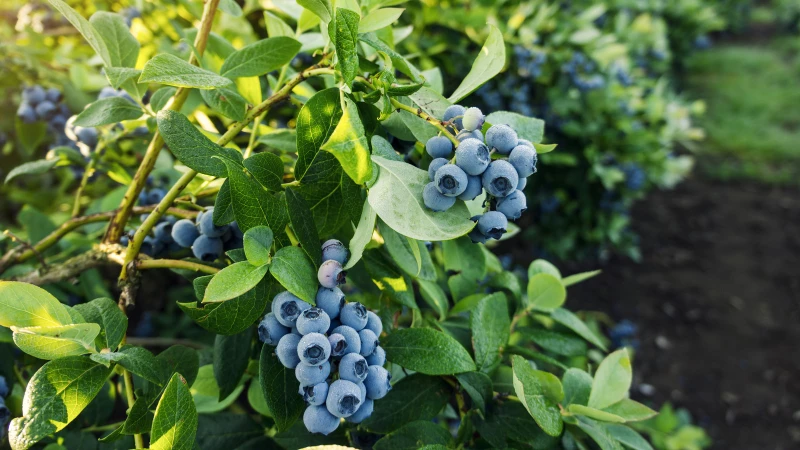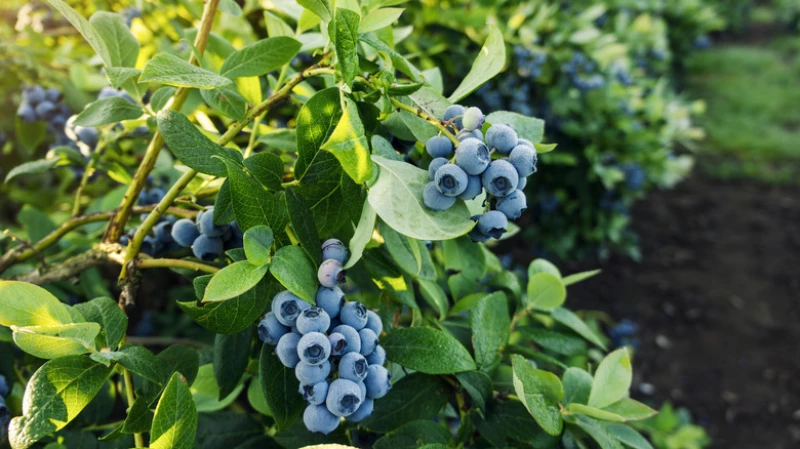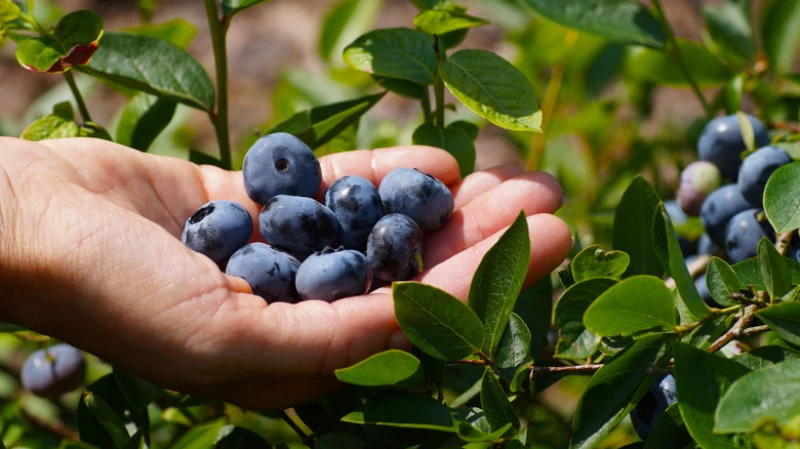When it comes to designing your landscaping or garden space, having a specific goal in mind is essential. Some homeowners focus on enhancing their home's curb appeal with flowering trees and garden beds. Others aim to attract pollinators like butterflies and bees, while some want to grow their own produce to save on grocery costs. If you're looking to achieve all of these benefits with just one plant, consider adding a blueberry bush to your property.
Blueberry bushes not only offer beautiful flowers that attract pollinators and delicious berries for humans, but they are also relatively low-maintenance. These plants can thrive without pesticides, do well in various soil conditions, and some are self-pollinating. Additionally, there is a wide range of blueberry varieties and cultivars to choose from, allowing you to select the best fit for your needs. Here are five popular types to consider planting in your yard.
Best for baking purposes: 'Bluecrop' blueberry plant
Bluecrop blueberry plants are ideal for baking purposes. With their flavorful and abundant berries, they are perfect for making pies, muffins, and other delicious treats. Consider adding a 'Bluecrop' blueberry plant to your garden for a fruitful harvest that will enhance your baking endeavors.
If you're in the market for a blueberry plant that produces large, juicy berries, consider the Highbush 'Chandler' plant (Vaccinium corymbosum 'Chandler'). These berries are perfect for snacking or adding to your morning meal or dessert. The plant yields fruit for a month to six weeks, ensuring you have an abundance of berries. Additionally, the bushes can grow up to 6 feet tall, making them a lovely addition to your landscape.
This variety thrives in USDA hardiness zones 4 to 7 and prefers full sun and loamy soil with a pH level between 4.5 and 5.5. It reaches a maximum height of 6 feet and width of 4 feet. The Highbush 'Chandler' is self-pollinating, but planting other blueberry varieties nearby can increase your yield. Consider the Earliblue or Jersey blueberry as pollinating partners for optimal fruit production.
Best for colder regions: 'Northland' blueberry plant
If you're living in a cold climate and are worried about the weather affecting your blueberry bushes, consider planting the Northern Highbush 'Northland' blueberry plant. This winter-hardy plant can withstand temperatures as low as -30 degrees Fahrenheit, ensuring a bountiful harvest in the spring. Its flexible branches make it ideal for regions with heavy snowfall, preventing breakage under the weight of snow.
This variety thrives in hardiness zones 3 to 7 and requires soil with a pH of 4.5 to 4.8. While it prefers full sun, it can also tolerate partial shade. With the right conditions, 'Northland' blueberry plant will produce berries within two to three years. As a mid-season bloomer, it is one of the most prolific varieties, yielding around 20 pounds of berries per season.
Top Pick for Warmer Climates: Rabbiteye Blueberry Plant
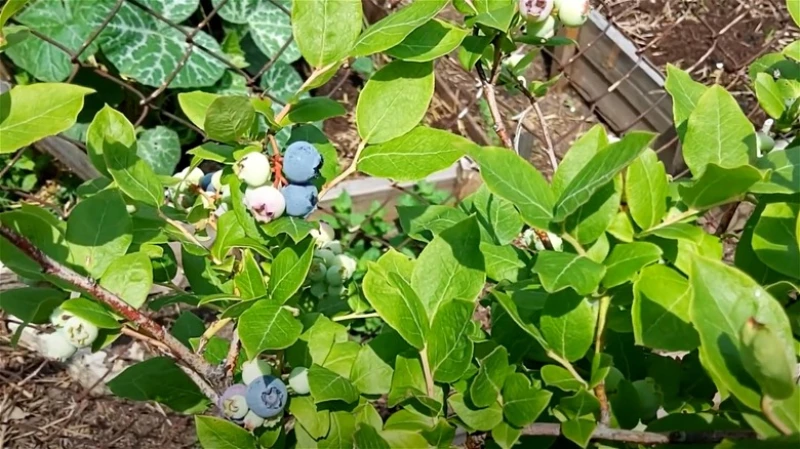
If you're considering growing blueberries in a warmer region, the Rabbiteye blueberry plant (Vaccinium virgatum/ashei) is an excellent choice. This variety thrives in hot and humid states like Florida, Georgia, and Alabama, making it well-suited for high temperatures. With shallow roots, it is also drought-resistant, making it ideal for dry spells. There are different types of Rabbiteye blueberries available, allowing you to select based on your specific requirements. For instance, the 'Baldwin' type flowers in mid- to late-season, while 'Brightwell' ripens early to mid-season.
Rabbiteye blueberries prefer soil with a pH level between 4.5 and 5.8, with higher acidity being advantageous. They enjoy full sun but can also thrive in partial shade. These plants are beginner-friendly as they can grow in less nutritious soil. However, they require cross-pollination to produce fruit and have specific pollinators such as carpenter or blueberry bees, as honeybees are not efficient pollinators for them.
Best for Ornamental Purposes: 'Pink Lemonade' Blueberry Plant
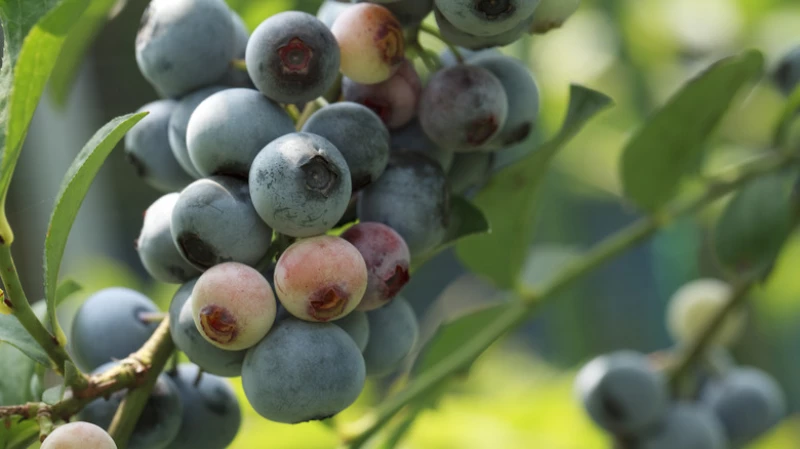
If you're looking for blueberries for ornamental purposes, the 'Pink Lemonade' blueberry plant is an excellent choice. This variety not only produces tasty berries but also adds aesthetic value to your garden with its pinkish fruits. The 'Pink Lemonade' plant is a hybrid that offers both beauty and functionality, making it a popular choice among gardeners.
If you're in the market for a blueberry bush that not only yields delicious berries but also enhances your curb appeal, look no further than the Rabbiteye 'Pink Lemonade' blueberry bush (Vaccinium 'Pink Lemonade'). This unique plant showcases pink flowers in the spring that eventually develop into pink blueberries. Yes, you read that correctly – pink blueberries! But the beauty of this bush doesn't end with the harvest. Come autumn, its green leaves transition to a striking orangish hue, adding a pop of color to your landscape.
Not only visually appealing, the fruit also boasts a subtle citrusy flavor, making it a delightful addition to your home garden. Thriving in hardiness zones 4 to 8 and preferring soil with a pH level between 4.5 to 5.5, these bushes thrive in full sun and consistently moist soil. With a maximum growth of 5 feet tall and 5 feet wide, it may take a couple of years before they start bearing fruit in the summer. While these bushes are self-pollinating, planting other blueberry varieties nearby can boost your fruit yield, making it a worthwhile experiment.

